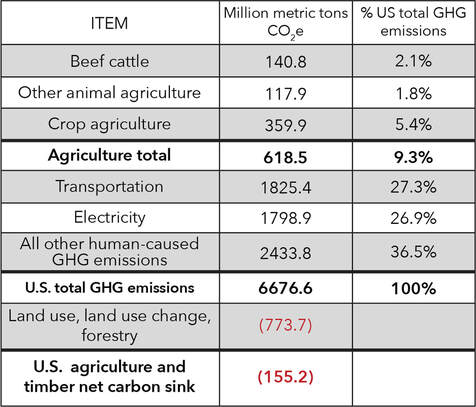cattle feeders care for the environment.
|
Raising beef responsibly has been a top priority for cattle feeders since the beginning, which is why they utilize practices that are good for the environment. Improved efficiency means a lower carbon footprint and fewer natural resources used for every pound of beef. Modern beef production greatly reduces the cattle industry’s carbon footprint. In fact, U.S. beef production has one of the lowest carbon footprints in the world, and greenhouse gas emissions from cattle only account for 2 percent of overall U.S. greenhouse gas emissions. When we discuss cattle and carbon, we are referring to methane emissions. It's important to understand that methane from cattle does not result in a net increase in carbon in the atmosphere. Methane is short-lived and part of a natural carbon cycle that moves from the air to soil to plants. Cattle consume the plants and release the methane back into the atmosphere where the cycle starts over again. But more than that, combined the U.S. Ag and Timber System is a net carbon sink, meaning agriculture and timber are actually removing all the carbon they collectively emit plus some of what other industries emit. cattle & climate factU.S. farmers and ranchers produce 18% of the world's beef with only 6% of the world's cattle. Cattle & climate FactCattle upgrade human inedible plants and feed byproducts into high-quality protein and essential micronutrients. |
Feedyards are focused on conserving and preserving our water and natural resources for current and future generations. This is why TCFA feedyards utilize water resource management plans that impact water quantity and quality. Management plans ensure feedyard practices are protective of surface and groundwater.
Feedyards collect and retain all rainwater and water trough overflow, which is then reused to irrigate neighboring farmlands. Manure from feedyards is spread on farmland to improve soil quality and organic matter without the use of synthetic fertilizers. Cattle & Climate FactCorn used to feed beef cattle in the U.S. represents only 10% of harvested corn grain or 8 million acres. TCFA feedyard members are net water importers, meaning they import the majority of feed corn from midwestern states that rely on rainfall rather than irrigation. |
To help TCFA Feedyard Members become as environmentally proactive as possible, TCFA conducts environmental site assessments that help feedyard managers understand the many federal and state environmental regulations they must comply with. In addition, TCFA offers enhanced environmental services to help feedyards with monitoring, testing and recordkeeping. Additionally, TCFA developed a model Pollution Prevention Plan for feedyards that has become the standard for other industries. All of these are encompassed within TCFA's Environmental Services Program.
And with the world population expected to grow to 10 billion by 2050, cattle feeders will continue to make strides in producing more healthy, sustainable beef while using fewer and fewer natural resources.
And with the world population expected to grow to 10 billion by 2050, cattle feeders will continue to make strides in producing more healthy, sustainable beef while using fewer and fewer natural resources.



